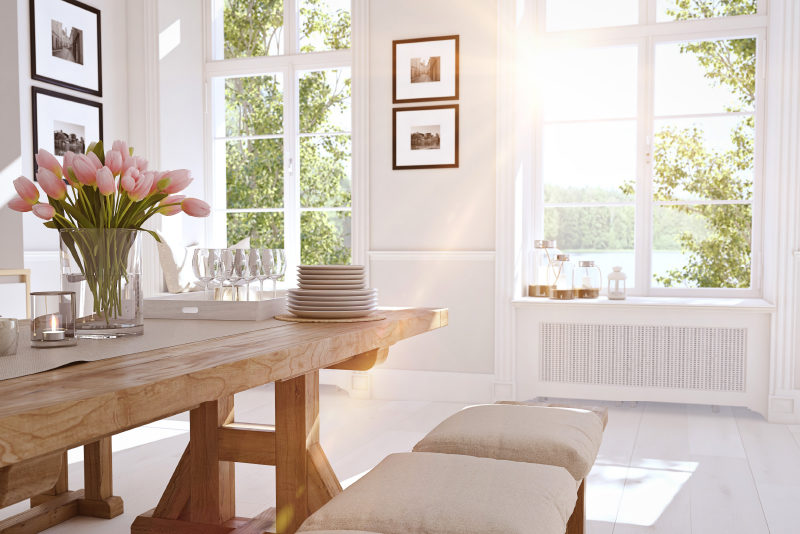
There are so many things to look forward to as Spring approaches: longer days, birds chirping, sunny skies, the list goes on! However, even though Spring is a sure sign of warmer days, the unpredictable weather can leave homeowners in a fit of discomfort. A warm day in March or April excites us and almost feels like summer, which means you can turn off the heat and open the windows. The next day, temperatures drop below zero. The constant cycle of having to readjust your heat for the cold days and AC for the sporadic warm days is an uphill battle all Spring long. Fortunately, heat pumps are a great solution for spotty Spring weather. Heat pumps not only ensure your comfort living in Fredericton year-round but are also very efficient and have the potential to reduce your utility bill. Keep reading to learn how heat pumps can help balance Spring temperatures and improve air quality in your home.
First, let’s help you understand the basics of how heat pumps circulate air in your home. Heat pumps work by transferring heat from one place to another. During the winter, the heat pump will extract heat from the outside air and transfer it inside your home. This process is called “heating mode”. In the summer, the process reverses and the heat pump pulls heat from your home and transfers it outside, which is called “cooling mode”. This is all done through a refrigerant that cycles through the system. Given Spring temperatures are so inconsistent, the heating and cooling modes will vary.
To ensure that your heat pump works at optimum performance, we recommend performing some Spring cleaning on your HVAC system. First, head outside to your outdoor unit with a broom and get rid of any debris, branches, or leaves on or surrounding your system. Next, spray the unit down with a hose to get rid of any built-up dirt and grime on the condenser coils and fan. On your indoor unit, cleaning or replacing your air filter can have a huge impact on system performance and overall air quality. Besides these do-it-yourself maintenance tips, we recommend booking a routine maintenance inspection with Degree Residential once or twice a year. Performing Spring cleaning on your heat pump will not only ensure your utmost comfort but will help sustain the life of your system.
It can be hard to balance the combination of Spring’s warm rainy days with the occasional return of a winter wind chill. Oftentimes, homeowners end up blasting the heat in the morning and then resort to using the AC in the afternoon to keep up with temperature changes. This also results in inconsistent and higher energy bills. To stay on top of comfortable and efficient temperature levels in your home during the Spring, we recommend checking outdoor temperatures each morning and adjusting your thermostat accordingly throughout the day. Another benefit of using a heat pump is that it can help improve the indoor air quality of your home and reduce Spring allergens. Many people suffer from allergies or other respiratory problems, and the circulated air from a heat pump can help alleviate some of these symptoms so that you don’t wake up feeling stuffy.
We’ve outlined some key temperature guidelines to help with optimizing the comfort in your home in the Spring.
Now that Spring has officially sprung, we hope this article helps you balance out the temperatures in your home. Some simple Spring cleaning and temperature optimizations can make a huge impact on not only your comfort but also your energy bills. Contact us today to learn more about our HVAC systems and experience the degree difference year-round!